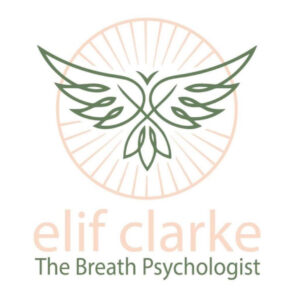
The Power of Shaking: Releasing Tension and Healing Through Movement
Did you know that shaking can be a powerful way to release tension and pain from your body, allowing your breath to flow more easily through your nervous system? It’s a natural, instinctive process that helps us reset and heal. While often overlooked, this simple yet profound act holds tremendous benefits for both our physical and emotional well-being.
Shaking in Nature: Wisdom from Animals
Animals demonstrate this wisdom effortlessly. When they encounter a threat, their bodies flood with adrenaline, preparing them for fight or flight. Once the danger has passed, animals instinctively shake. This natural shaking response allows them to release fear and adrenaline (the survival hormone) from their bodies, completing the fight-or-flight cycle. Through shaking, they shift their nervous system from a sympathetic state (fight/flight) to a parasympathetic state (rest and digest), quickly restoring balance and calm.
Why Humans Need Shaking Too
Humans, unlike animals, tend to hold onto stress, fear, and unresolved emotions. Over time, these unprocessed energies can store in our bodies as tension, chronic pain, restricted breathing, and emotional blockages. Without an outlet like shaking, these stress patterns can remain lodged in our system, affecting our health and well-being. Shaking offers a natural release mechanism. It helps discharge pent-up emotions and stress patterns, restoring balance to both the body and mind.
Shaking in Transformational Breath Sessions
In Transformational Breath sessions, this natural wisdom is harnessed. Clients often experience spontaneous shaking or tantrum-like movements while engaging in breathwork. These involuntary responses are the body’s way of releasing deeply held tension, particularly in the diaphragm and other areas where breathing may be restricted. Shaking helps to release emotional blocks, freeing up the breath and creating space for healing.
When we shake, we allow our body to express emotions that may have been stored for years, offering an opportunity to release the trapped energy that hinders our ability to breathe fully and live freely.
Case Study: A Journey of Healing through Shaking
A client, Sarah (name changed for confidentiality), came to Transformational Breath therapy suffering from an eating disorder. She had been feeling disconnected from her body for a long time and believed that breathwork might help her reconnect with it. During our initial session, we established her breathing pattern and identified areas in her body holding tension. Her breathing was shallow and fast, resembling a “fight-or-flight” response, and her shoulders were tight and rigid. These observations revealed valuable insights into her unconscious patterns.
Sarah’s breathing pattern provided a deeper understanding of her emotional state. Her shoulders, particularly the right side, were extremely tense. In Transformational Breath, the right side of the body is associated with interactions with others, self-expression, and masculine energy. Shoulders are often indicators of unresolved issues related to forgiveness—tension here may signal difficulty in forgiving others.
Her jaw was also tightly clenched, another sign of unresolved frustration and anger. Interestingly, at the start of therapy, Sarah mentioned that anger was an emotion she rarely experienced, describing it as “foreign.” However, her body was holding onto it, even though her conscious mind was disconnected from these feelings.
As the session progressed, Sarah’s body began to respond. She started to shake and throw what appeared to be a tantrum—bending her knees, moving her arms up and down, and stomping her feet on the floor. This involuntary movement was her body’s way of releasing the pent-up anger and rage that had been unconsciously stored.
As the shaking intensified, Sarah’s breath began to open up. She started to breathe more deeply and freely. For the first time, she connected with the anger she had suppressed for so long. In her own words, she expressed, “I feel alive with all of my rage.” This was a breakthrough moment for her. By allowing her body to release the rage, she reconnected with herself in a profound way, and her breath reflected this newfound freedom.
Incorporating Shaking into Your Self-Practice
Shaking isn’t only reserved for guided breathwork sessions. You can incorporate it into your own self-practice to deepen your connection with your breath. At the beginning of your breathing practice, shaking can help move stagnant energy and open your breath pathways. This simple act of movement can release tension, allowing your breath to flow more naturally and helping to rebalance your nervous system. As a result, you’ll feel more relaxed, calm, and grounded.
The Holistic Power of Shaking
Shaking is more than just a physical release. It’s a holistic practice that works on multiple levels—physical, emotional, and spiritual. When you allow yourself to shake, you’re not just moving muscles and joints; you’re also letting go of unexpressed emotions, rewiring your nervous system, and creating space for healing and renewal. Shaking can help integrate past experiences and make room for a more balanced and harmonious state of being.
Conclusion
Sarah’s journey illustrates the transformative power of shaking in breathwork. By embracing the natural instinct to shake, she was able to release deeply held emotions, reconnect with her body, and access a fuller, more liberated breath. Whether guided in a session or practiced at home, shaking can offer profound relief. It’s a simple yet effective way to reset the nervous system, release stored tension, and restore emotional and physical balance.
So, the next time you feel stuck, stressed, or disconnected, give yourself permission to shake it out. You might be surprised at the sense of release and renewal that follows.

Recent Comments